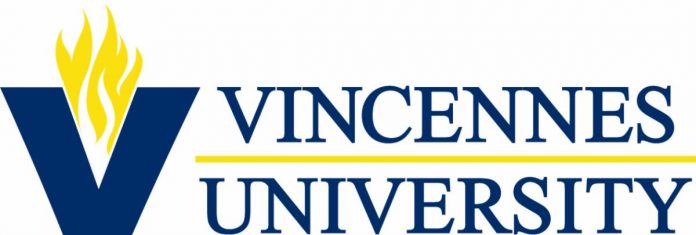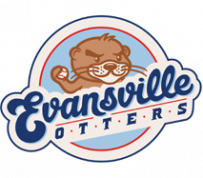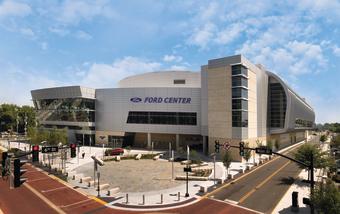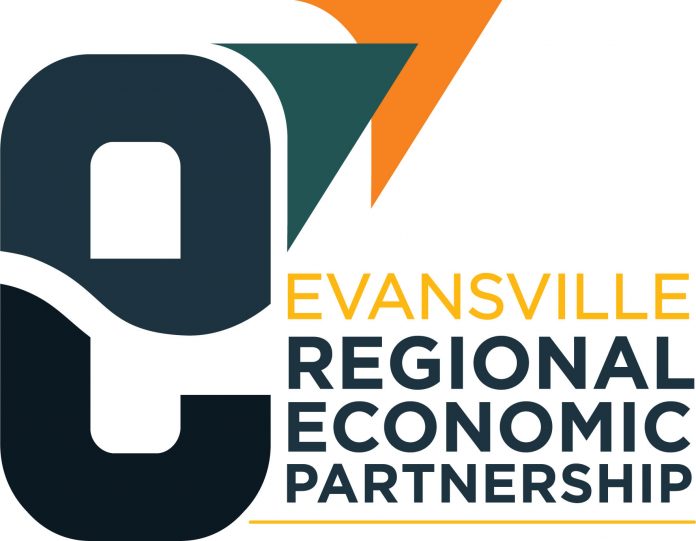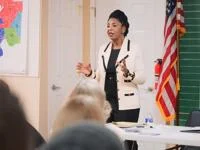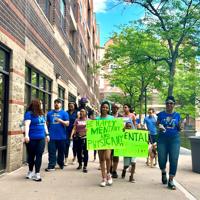|
|||||||||||||||
|
|||||||||||||||
|
|||||||||||||||
|
|||||||||||||||
|
|||||||||||||||
|
|||||||||||||||
|
HOT JOBS
Vincennes University unveils Design and Innovation Training Studio on Vincennes Campus
VINCENNES, Ind. July 23, 2024 – Vincennes University proudly hosted the grand opening of the VU Design and Innovation Training Studio in the Summers Center on the VU Campus on Tuesday, July 23. The training studio, developed with funding from the Lilly Endowment Inc.through its Charting the Future Initiative is a significant step in further enhancing access to high-quality Science, Technology, Engineering, and Mathematics (STEM) education in Indiana.
It is part of VU’s ongoing efforts to establish a network of Design and Innovation Studios in elementary and middle schools throughout Southwest Indiana. Partners in this statewide project include K-12 schools, Purdue University Indiana Next Generation Manufacturing Competitiveness Center (IN-MaC), and Toyota Motor Manufacturing, Indiana, Inc. (TMMI).
VU President Dr. Chuck Johnson said, “We are excited to unveil this center as one more way that VU is collaborating with industry, higher education, and K-12 education to address the critical need for increased access to high-quality STEM education in our state. The training center is a hub for a growing network of STEM education studios in our region. It will introduce many current and new generations of students to the available career opportunities and the skills they will need to succeed in an Industry 4.0 economy. We remain grateful to Lilly Endowment for its support of VU’s many Industry 4.0 initiatives across Indiana.”
The new studio on the VU campus is part of a statewide network of 101 Design and Innovation Studios in elementary and intermediate schools, within industry settings, and at VU and Purdue IN-MaC. The 47 Design and Innovation Studios in Region 11, which includes Knox, Gibson, Vanderburgh, Dubois, and Perry counties, impact more than 15,000 students and upskill 150 teachers and future educators annually. The studios in Region 11 represent a $1 million investment in K-8, industry, and post-secondary education.
VU has made a significant investment by supporting 12 studios. Another significant partner in this region is Toyota Indiana. Together, VU, Toyota, and Purdue IN-MaC have made a significant investment in the students of Southwest Indiana by supporting the placement of over 40 studios in local schools.
“Toyota recognizes the importance of investing in STEM education across the educational spectrum,” said Toyota Indiana president, Tim Hollander. “As an employer and industry leader, Toyota Indiana appreciates VU’s efforts in addressing the need for skilled professionals and shares its innovative approach to establishing studios across the region.”
The first-of-its-kind facility in Southwestern Indiana will serve as a hub of STEM education professional development and training for the state’s largest cohort of Design and Innovation Studios in Southern and Southwestern Indiana. The training studio will provide K-12 students, college students, educators, and community partners in Southern Indiana and Southwestern Indiana exceptional access to technologies, activities, and lessons, preparing the future workforce for emerging careers in Industry 4.0, such as advanced manufacturing, robots, and AI.
Numerous research studies and reports focused on early STEM education predict that STEM-related careers will grow twice as quickly as other careers in the coming years. However, research also shows that 92% of boys and 97% of girls will lose interest in STEM if they are not immersed in STEM-related content before fifth grade.
The VU Design and Innovation Training Studio is a leading part of an initiative providing support for educators to help their students see the potential opportunities for Industry 4.0 careers and for students to explore STEM pathways.
Specifically, the training studio will be incorporated into VU’s bachelor’s degrees in Education programs to ensure that VU Education graduates have exposure to and understanding of the way that technology is changing so that they can help support the development of a workforce ready to assume roles in Industry 4.0 and beyond.
According to College of Social Science, Performing Arts, and Communication Dean Dr. Cynthia Ragle, “The studio provides hands-on experiences to prepare the next generation of educators and design thinkers. With the innovative programs in this studio, the VU Education Department’s goal is to thoroughly prepare pre-service teachers enrolled in the dual-licensure Elementary and Special Education program, as well as the Science and Math education bachelor’s programs. Through these efforts, VU continues to make significant investments in education and the preparation of future educators for Indiana.”
The July 23 ribbon-cutting ceremony featured remarks from VU President Johnson, Dean Ragle, Vincennes Community School Corporation Superintendent Greg Parsley, and Purdue University IN-MaC Director of Education & Workforce Sascha Harrell. Attendees toured the new training studio and learned more about the innovative programs offered.
This continued investment in Indiana’s students and economic development by VU, along with the expanded partnership with Purdue IN-MaC, Toyota, and K-12 education, represents a community-wide commitment to empowering the next generation through a strong foundation in STEM education in Southwest Indiana and beyond.
EPD DAILY ACTIVITY REPORT
FOOTNOTE: EPD DAILY ACTIVITY REPORT information was provided by the EPD and posted by the City-County-County Observer without opinion, bias, or editing.
Otters split series opening doubleheader
Making up for a postponement on May 26, the Otters (24-38) play four games against the Y’alls (27-34) in three days.
Game 1 – Evansville 5, Florence 1
Zach Smith (5-5) proved his All-Star caliber pitching tonight. The right-hander’s command was spotty, allowing six walks but he was resilient, allowing just three hits on one run through five innings. His gutsy performance left seven Y’alls stranded on the base.
The Otters fell behind 1-0 in the first inning but bounced back in the middle innings. Dakota Phillips hit a fielder’s choice RBI to tie the game at one.
In the fifth frame, Evansville jumped ahead with a Delvin Zinn run-scoring single with two outs, and they never looked back.
The offense piled on another in the sixth, before finalizing the scoring with two in the seventh frame. To close out Game 1, the bats found five hits in a row to solidify their lead in the last inning.
Evansville garnered a hit in every inning, and the team totaled a dozen knocks to Florence’s three.
Zinn led the offense with a perfect four-for-four game at the plate with an RBI and a run scored.
Game 2 – Florence 6, Evansville 4
Similar to the opener, Florence scored first to open play. This time, they piled on three runs in the first inning.
Not backing down, the Otters showed a fight and got one back on a solo homer from Phillips in the second inning.
The Y’alls answered with a run in the home second before the Otters scored three unanswered to tie the game.
Pavin Parks laced a two-RBI double to the gap, plating two in the third. The next inning, Logan Brown hit an RBI double to tie the game at four.
That would be all the Otters could muster up. Florence took the lead in the home fourth with a run and added another in the fifth to finalize the scoring.
The Otters outhit the Y’alls 9-8 in the nightcap. Parks and Brown each garnered two hits.
The Otters will return tomorrow with an early bird special against the Y’alls. First pitch is at 10:03 a.m. CT. Coverage is available on the Otters Digital Network and FloBaseball.
Revitalizing a Struggling Downtown: A Long-Term Case Study
FEATURE: Revitalizing a Struggling Downtown: A Long-Term Case Study
BY JOE J WALLACE
July 24, 2024
In the heart of many American cities lies a downtown area that was once bustling with commerce, culture, and community. Over the past six decades, however, numerous downtowns have faced significant challenges: retail stores shuttered, buildings stood vacant, and populations dwindled. Such was the case for the downtown in question. Fifteen years ago, the local government embarked on an ambitious plan to revitalize this struggling area. However, despite initial enthusiasm and some early successes, long-term outcomes have been disappointing, revealing the complexity of urban renewal.
The Initial Revitalization Initiative
In response to decades of decline, the local government launched a comprehensive revitalization plan. The centerpiece of this plan was the construction of a $128 million Sports and Entertainment arena. The Ford Center arena was touted as the key feature that would fill empty businesses, attract visitors, and pay for itself through generated revenue. Alongside the arena, the initiative included significant investment in infrastructure, business incentives, and public safety efforts.
Key Components Of The initial Downtown Improvement plan included:
- Ford Center Arena: A state-of-the-art facility intended to host sporting events, concerts, and other entertainment to draw large crowds downtown.
- Infrastructure Improvements: Upgrading roads, sidewalks, and public transportation to make the downtown more accessible and appealing.
- Business Incentives: Offering tax breaks, grants, and low-interest loans to attract new businesses and support existing ones.
- Public Safety Enhancements: Increasing police presence and implementing community policing strategies to reduce crime.
- Cultural and Community Events: Organizing festivals, markets, and other events to draw people into the downtown area.
- Residential Development: Encouraging the construction of affordable housing to bring residents back into the city center.
The Short-Term Successes
In the early years, the revitalization initiative yielded promising results. The new arena brought in entertainment and sporting events that drew large crowds. New businesses opened, creating jobs and generating tax revenue. Cultural events and festivals brought people together, fostering a sense of community. The construction of affordable housing attracted some new residents, and public safety improvements led to a reduction in certain types of crime.
The Long-Term Realities
Despite these initial successes, the long-term outcomes have been far less encouraging. The downtown area continued to face significant challenges, revealing the limitations of the revitalization plan and the need for a more nuanced approach.
- Population Decline: Although new residential housing was developed, the downtown population continued to decrease. Many people were still hesitant to move back due to ongoing concerns about crime and the overall economic stability of the area. The new housing stock often remained underutilized, reflecting deeper demographic and economic trends that the revitalization plan failed to address.
- Lack of Essential Services: One of the most critical issues was that the downtown area never had a sufficient population to support fundamental needs like a grocery store, gas station, or pharmacy. Without these essential services, the area struggled to attract and retain residents, further exacerbating the population decline.
- Economic Volatility: While the initial wave of businesses brought some economic activity, many of these establishments, particularly restaurants, struggled to survive. A revolving door of failed businesses created an unstable economic environment, deterring further investment. The business incentives proved insufficient to ensure long-term sustainability, as underlying economic conditions remained unfavorable.
- Ford Center Arena Financial Issues: The Ford Center arena, intended as the linchpin of the revitalization effort, failed to deliver on its promises. Although it brought some good entertainment, it also incurred significant operating losses from day one, diverting funds from essential public services like fire and police. Moreover, the revenue generated by the arena was insufficient to cover the loan repayments, creating a financial burden on the city.
- Crime Rates: Public safety improvements had a limited long-term impact. Although petty theft decreased initially, more serious crimes persisted. The root causes of crime—poverty, unemployment, and social dislocation—remained largely unaddressed, limiting the overall effectiveness of these measures.
- Neglected Suburbs: As the local government focused resources and attention on the downtown area, the growing suburbs were largely ignored. This neglect led to a widening gap between the struggling urban core and the thriving suburban communities. Residents in the suburbs enjoyed better amenities, schools, and public services, further drawing people and investment away from the downtown.
- Wages and Employment: Although new jobs were created, wage growth remained sluggish. Many of the new positions were in the service sector, which typically offers lower wages and less job security. The issue of declining real wages persisted, exacerbating economic disparities and limiting the overall impact on the local economy.
Lessons Learned
The experiences of the past 15 years highlight several critical lessons for urban renewal efforts:
- Holistic Approach: Addressing infrastructure, business incentives, and public safety in isolation is insufficient. A comprehensive strategy that also tackles underlying social and economic issues is crucial for sustainable revitalization.
- Essential Services: Ensuring that the downtown has essential services like grocery stores, gas stations, and pharmacies is crucial for attracting and retaining residents.
- Community Involvement: Engaging residents and local businesses in the planning and implementation process ensures that the initiative reflects the community’s needs and aspirations.
- Suburban Inclusion: Ignoring the suburbs while focusing on downtown can create imbalances that undermine overall regional growth. A balanced approach that includes both urban and suburban areas is essential.
- Long-Term Commitment: Revitalizing a struggling downtown is a long-term endeavor that requires sustained effort and investment. Short-term gains must be balanced with strategies for long-term stability and growth.
- Financial Viability: Ensuring that major investments, like the FORD CENTER arena, are financially viable and do not drain resources from essential public services is critical for the success of such projects.
Moving Forward
To move forward, the local government must reassess its strategies and adopt a more inclusive and comprehensive approach. Addressing the root causes of economic and social challenges, investing in both urban and suburban areas, and fostering community involvement are essential steps. True revitalization requires a multifaceted journey requiring patience, commitment, and collaboration.
In conclusion, the initial revitalization efforts brought some short-term benefits but failed to address the deeper, long-term challenges facing the downtown area. The lack of essential services, persistent economic volatility, financial issues with the FORD CENTER arena, and neglect of the suburbs highlighted the need for a more holistic approach. The experiences from this initiative offer valuable insights for other cities striving to breathe new life into their downtowns, reminding us that true revitalization is a complex and ongoing process.
FOOTNOTE: “This article was written by Joe J. Wallace with assistance from a large language model using artificial intelligence through prompting”
The City-County Observer posted this article without bias or editing.
E-REP MAYORS 2024 LUNCHEON
E-REP 2024 MAYORS LUNCHEON
July 24, 2024
WHAT: Join the Evansville Regional Economic Partnership (E-REP) on Friday for lunch and a Q&A discussion with Mayors in the Evansville Region.
The mayors will discuss the importance of collaboration, happenings in their community, reflections upon the past year, and how they plan to continue to work together to cultivate a stronger region.
WHEN: Friday, July 26, 2024
11:30 AM – 1:00 PM (CDT)
WHERE: Old National Events Plaza
715 Locust St, Evansville, IN 47708
WHO:
Mayor Steve Loehr – Mt. Vernon
Mayor Brad Staton – Henderson
Mayor Stephanie Terry – Evansville
Mayor Greg Wright, Princeton
Mayor Charlie Wyatt – Boonville
For additional event information, contact Events Director, Kali Mayes, kmayes@evvregion.com
Indiana’s First Black Woman Nominee For U.S. Senate Promises To ‘Keep Pushing’
Trailing her opponent, Indiana’s first Black woman nominee for U.S. Senate promises to ‘keep pushing’
Even as a kid, Dr. Valerie McCray had big questions about systemic issues happening at the top of the U.S. government.
Why do people have to be given money to access health care? Why are people turned away from getting the services they need? She continued her questioning throughout her childhood into her career as a clinical psychologist.
Joe J. Wallace Completes Credential From Vanderbilt University As A “Prompt Engineer”
Joe J. Wallace, A Distinguished Retired CEO And Chief Innovation Officer Receives His Credentials From Vanderbilt University In “Prompt Engineering for Large Language Models”
written by City-County Observer Staff
July 23, 2024
Prompt Engineering is a cutting-edge field that leverages the vast knowledge base available through the narrative use of Large Language Models (LLMs) via Artificial Intelligence. With an illustrious career spanning several decades in product development, executive leadership, and published authorship, Wallace brings an unparalleled wealth of knowledge and experience to his new role as an AI-based business consultant.
A Legacy of Innovation and Leadership
Joe Wallace’s career is a testament to his dedication and innovation in various industries. As the founding Managing Director of the Coachella Valley Innovation Hub and CEO of the Coachella Valley Economic Partnership (CVEP), Wallace has been a pivotal figure in economic development and technological advancement. His tenure in the electro-optics industry saw him involved in over ten start-up businesses, including a NASDAQ-listed public company that led the exchange for percentage ROI in 1995.
Academic Excellence
A Stanford University alumnus with an MS in Mechanical Engineering, Wallace also completed all required coursework for a PhD at UC Santa Barbara, earned a BS from the University of Evansville, and an AS from Hazard Community College in Appalachia. His academic background laid a strong foundation for his successful ventures in technology and business.
Pioneering Economic Development
Wallace’s journey into mentoring entrepreneurs began as the founding President and CEO of the Growth Alliance for Greater Evansville. He established Innovation Pointe, a technology business incubator, and the EnGAGE program to support small and medium businesses. Wallace also facilitated the Partnership Intermediary Agreement with the Crane Naval Weapons Center, providing access to federal intellectual property for Evansville businesses, thereby fostering innovation and growth. Over the course of his career, Wallace has mentored over one hundred technology-based startup companies.
Broad Industry Experience
Throughout his 35-year career, Wallace has held senior executive roles across diverse industries, from developing cutting-edge technology like the erasable optical disc (CD ROM Burner) to professional home improvement services. His advisory roles span multiple businesses across the United States, reflecting his broad and deep understanding of technology, business, and commercialization.
Renowned Speaker and Author
An invited speaker at symposia in the United States, Japan, Singapore, and Malaysia, Wallace has delivered keynote speeches at numerous events, including the International Chief Innovation Officer Summit in San Francisco. He has authored over 1,000 columns in an online political blog and published papers in both trade and refereed journals. His book, “Living Outside the Box,” was published in 2019 and became a category #1 seller on Amazon. His kick-off book tour started at Union County High School, where Wallace graduated, and included the Wall Street Journal’s Future of Everything Conference in New York City.
Accolades and Honors
Wallace’s contributions have been recognized with numerous awards, including the SBEMP Leader of the Year (2016), the Spirit of Entrepreneurship Award by CSU San Bernardino (2014), and the Clean Air Award by the South Coast Air Quality Management District. He was also a nominee for the Ernst & Young Entrepreneur of the Year Award (2015) and named one of the Top 50 Economic Development Professionals in North America.
His businesses have garnered accolades such as the Photonics Spectra Circle of Excellence Award, the R&D 100 Award, and multiple Indiana Growth 100 Awards from the IU Kelley School of Business. As an undergraduate, Wallace was one of eleven National Finalists in the American Society of Mechanical Engineers’ Old Guard competition, presenting on optimal nuclear reactor core design.
Community Engagement
As CEO of Priority One, Wallace secured $79 million for the expansion of the CSU San Bernardino Campus in Palm Desert, California. He has served as a trustee of the University of Evansville and the Leukemia and Lymphoma Society, for which he has run fifteen marathons, raising over $100,000 for cancer research. In 2015, the Southern California Black Chamber of Commerce awarded CVEP and Wallace the Martin Luther King Jr. Legacy of Service Award.
A New Chapter in AI Consulting
Joe Wallace’s extensive background as a product development engineer, CEO, and prolific author positions him uniquely to add substantial value to organizations as an AI consultant. His recent credential from Vanderbilt University as a Prompt Engineer for large language models underscores his commitment to staying at the forefront of technological advancements. Wallace is poised to leverage his expertise to guide businesses through the complexities of artificial intelligence and machine learning, driving innovation and growth in this dynamic field.
Contact Information
For further information or to schedule an interview with Joe J. Wallace, please contact him by email at jjw0729@aol.com.



